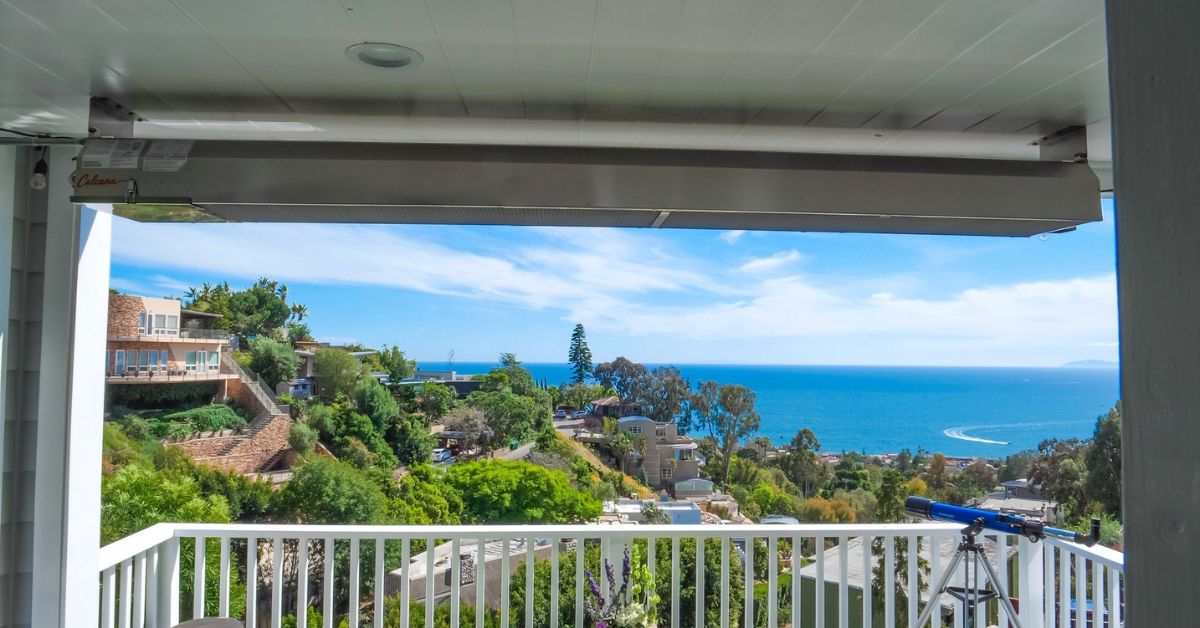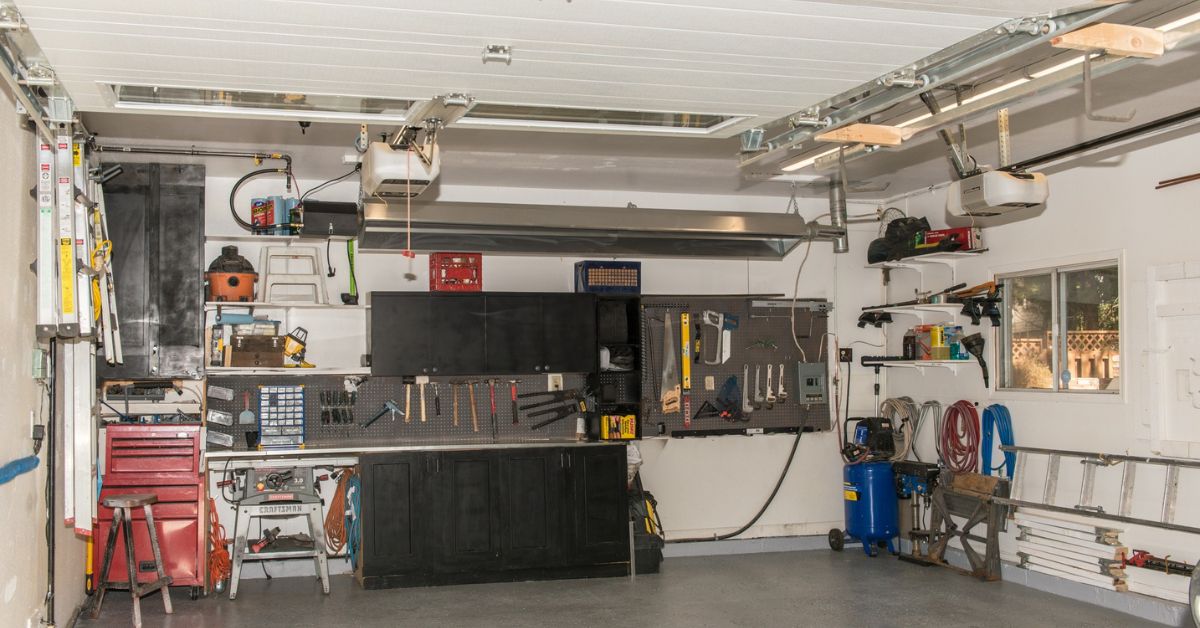Infrared heaters from Calcana USA are reliable units that keep outdoor spaces at comfortable temperatures. Many beachfront properties use these units to make their patios inviting and relaxing on breezy days, but salty, humid air can also damage your unit. Combat corrosion in outdoor heating on the coast with the right protective equipment and regular maintenance to keep your infrared heater performing at its best year-round.
Understanding Corrosion in Coastal Areas
Corrosion is a natural process where metals deteriorate over time due to reactions with their environment. Corrosion usually appears as rust, tarnish, or pitting on metal components in outdoor heating units. These spots weaken the heater’s structural integrity, reduce its efficiency, and shorten its lifespan.
Why Coastal Areas Present Unique Challenges
Coastal environments are especially harsh on outdoor equipment due to consistent exposure to salt, moisture, and wind. Salt from the ocean air speeds up the oxidation process that causes metals to rust.
Humid conditions expedite wear and tear, as moisture corrodes metal surfaces and seeps into electrical components. Over time, these coastal elements impact your unit’s appearance and performance.
The Impact of Corrosion on Infrared Heaters
Rust on metal brackets or screws can cause units to loosen or malfunction, while buildup on heating elements reduces energy efficiency. This impact results in slower warming times, uneven heat distribution, or, in severe cases, complete system failure in infrared patio heaters. Addressing corrosion protects your investment and enables you to use optimal heating solutions year-round.
Installing a Heater Designed for the Climate
Coastal areas create tough conditions for outdoor equipment, but investing in units designed for your climate will prevent further corrosion damage. Salty mist accelerates corrosion, humidity fosters moisture buildup, and wind carries abrasive particles that can damage materials over time.
Heaters not equipped for these challenges may deteriorate quickly, leading to frequent repairs or replacements. For a reliable setup, using a heater built to withstand these elements provides durability, efficiency, and peace of mind.
The Strength of Stainless Steel and Marine-Grade Materials
Calcana USA addresses the demands of coastal climates by crafting heaters with high-quality stainless steel and marine-grade stainless steel. These robust materials resist rust and oxidation, which makes them ideal for properties exposed to salty air.
Marine-grade stainless steel, in particular, provides an added layer of protection with durability designed to endure the rigors of oceanfront conditions. This material extends the lifespan of your heater for reliable warmth without the constant need for maintenance.
Reliable Systems Tailored to Coastal Needs
When you purchase a Calcana USA infrared heater, you’re investing in a system designed with your environment in mind. These units incorporate corrosion-resistant materials and undergo rigorous testing for high-quality performance in challenging coastal settings.
Whether you're heating a bustling restaurant patio or a cozy beachfront deck, Calcana USA offers tailored solutions to meet your needs. Our heaters keep your outdoor area inviting, while standing strong against the elements year-round.
Protective Measures for Coastal Patios and Decks
Coastal environments can be tough on any outdoor equipment, but with the right precautions, you can keep your infrared patio heater in excellent condition. Protective measures extend your unit’s lifespan and maintain reliable performance, no matter the weather.
Installation Tips
Choose a location that minimizes direct exposure to salt-laden winds and moisture when setting up your heater. For example, installing under a covered area, such as a pergola or awning, can provide an added layer of protection from the elements.
Mount the heater securely with corrosion-resistant brackets, such as those made from stainless steel or powder-coated metals, to install it properly. This installation method prevents rust that could compromise the unit’s stability. If you need further support, follow the manufacturer’s guidelines to calculate a safe distance from walls or ceilings to allow for proper ventilation and reduce buildup of salt and moisture around the heater.
Protective Coating and Covers
Investing in protective coatings and covers can boost your infrared patio heater’s longevity. After securing the mounts, apply a high-quality anti-corrosion spray or sealant to metal components to create a barrier against moisture and oxidation. Some heaters even come with pre-treated finishes, but adding an extra layer of protection will combat corrosion in outdoor heating on the coast.
Cover the heater with a waterproof and UV-resistant cover to shield it from salty air and harsh weather conditions when not in use. Choose a fitted cover that allows for proper air circulation to avoid trapping moisture inside. Incorporating these protective measures keeps your heater in top shape, ready to deliver reliable warmth whenever you need it.

Undergoing Maintenance for Infrared Patio Heaters
After properly installing your corrosive-resistant infrared patio heater, regular maintenance keeps it running smoothly, especially in tough coastal conditions. Monthly checkups work well for homeowners, but businesses that greet multiple people a day benefit from inspecting their units even more often. With consistent care, you’ll enjoy reliable warmth, a longer-lasting heater, and fewer unexpected repairs.
Cleaning and Inspecting Your Heater
Salt, sand, and moisture can accumulate on your heater’s surface, which leads to corrosion and reduced efficiency. Regularly clean your heater with a damp microfiber cloth and mild, non-abrasive detergent. Avoid harsh chemicals that could damage protective coatings.
After wiping down the surface, inspect your unit for visible rust, loose brackets, or frayed wires. Spotting these issues early can help you promptly address them before they turn into bigger problems.
Addressing Minor Repairs Early
Rust spots, squeaky brackets, and other seemingly small issues can quickly worsen in coastal conditions. For instance, untreated rust can spread, weaken structural components, and cause the mount to loosen. Keep a corrosion-resistant spray or rust remover on hand to treat small problem areas as soon as you notice them.
Similarly, replace worn-out or rusted screws, bolts, or brackets with stainless steel hardware to maintain the heater’s stability. Consult the manufacturer’s guide or reach out to a professional for advice if you detect unusual sounds, inconsistent heating, or minor electrical issues.
Scheduling Professional Servicing
While DIY cleaning and minor repairs go a long way, a certified technician can thoroughly inspect the unit, clean internal components, and detect hidden issues that might affect performance. Schedule servicing for your coastal property at least once a year to determine whether salt and moisture have infiltrated hard-to-reach areas. A professional tune-up will keep your heater running efficiently and safely, especially during peak usage seasons.
With proper materials, installation and care, your outdoor heating unit can create the perfect atmosphere for relaxing or entertaining guests. If your infrared patio heater is beyond repair, our specialists at Calcana USA can help you replace it with ease. Visit our website today to explore our products and services!





Leave a comment
This site is protected by hCaptcha and the hCaptcha Privacy Policy and Terms of Service apply.